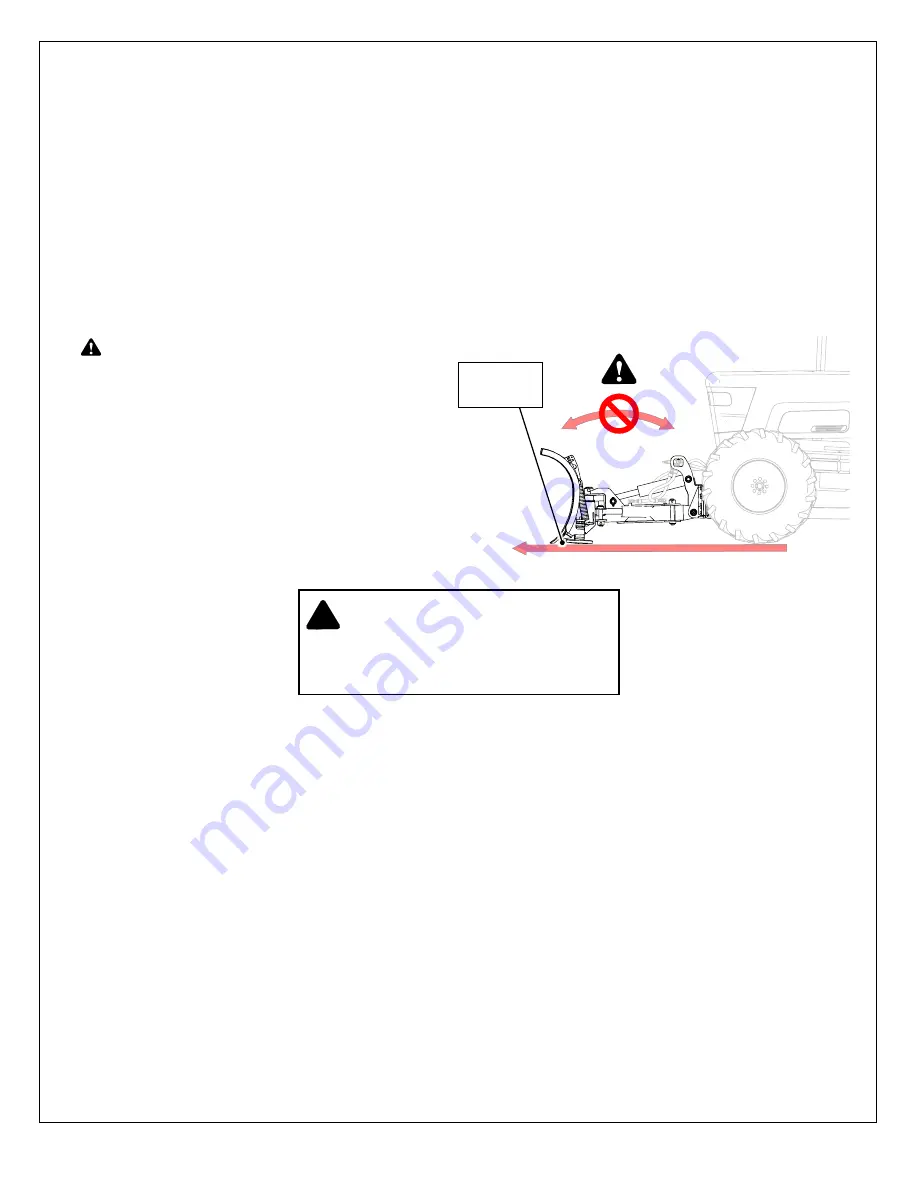
20
Snow Clearing
Once the SB series snow blade is mounted and tested it is ready for snow clearing operations.
The SB is designed only for snow removal operations, and works in various configurations in forward modes.
How and when to use the various configurations and power unit features such as float control, will be dictated by a
combination of variables:
• Power unit characteristics.
• Condition and type of surface to be cleared.
• Your experience using the SB series snow blade.
Knowing the capabilities and features of your power unit and snow blade, coupled with your experience is the best way to
safely and efficiently tackle any snow clearing operation.
Starting to clear snow:
•
Ensure the snow blade is parallel to the surface,
not curled too far forward or back, to ensure the snow
rolls and folds properly
• Chose a blade angle.
• Lower the snow blade, ensure the mouldboard rests
squarely on the surface, cutting edge and skid shoes
are even.
•
Start off slow, allow the tires to grip before getting up
to speed.
• As you near the far side of the row, reduce speed and
raise the blade to help stack the snow.
Parallel to
the surface
!
CAUTION
Operational Hazard
WARNING: Always wear seat belt when
clearing snow. Sudden contact with a hidden
object can result in serious personal injury.
Snow Clearing Tips
Tips to help make safe and efficient use of your SB series snow blade. Aways review your
site clearing plan.
• Before snow even begins to fall, use stakes or wands
to mark the edges of places that need to be cleared,
so that you can clear safely and neatly without
damaging the surrounding lawns. You can also mark
hydrants, utility boxes, gas meters, sewer vent pipes,
etc
• Clearing requires a safe, manageable speed limit,
generally no greater than 15 km/h (10 mph). Faster
speed reduces your visibility by pushing or blowing
snow onto the windshield. If you hit an obstruction
while clearing, the faster you’re going, the greater the
potential for personal injury or damage to equipment.
•
Pile snow safely without obstructing traffic visibility and
without obstructing access to fire hydrants, utilities,
mailboxes, property, and parking areas.
• Use caution when clearing next to curbs.
•
If a significant amount of snow is expected, clear
during the storm rather than letting snow accumulate.
Deep snow is heavy and unmanageable to move,
costing time and increasing wear on equipment
• Remove snow before it becomes too wet. Wet snow
is much heavier and could add extreme mechanical
stress to the snow blade.
• If snow accumulates, it may be necessary to raise
the blade and shear off layers of snow until a working
area is cleared. Work small areas in multiple passes
to push snow to outer edges.
• Allow the snow depth and water content to determine
the width of your pass, or how much blade overlap
you use for each pass. Move just enough snow with
each pass to clear efficiently without overloading your
equipment, the blade or vehicle.
















































